[False Solomon Seals and Lilies-of-the-Valley: The Genus Maianthemum East of the
Cascade Mts. of Oregon and Washington]
False Solomon Seal, Western Solomon Plume, Feathery False Lily-of-the-valley, Plumed Solomon's Seal, Plumed Spikenard
Maianthemum racemosum ssp. amplexicaule
Synonym: Smilacina racemosa
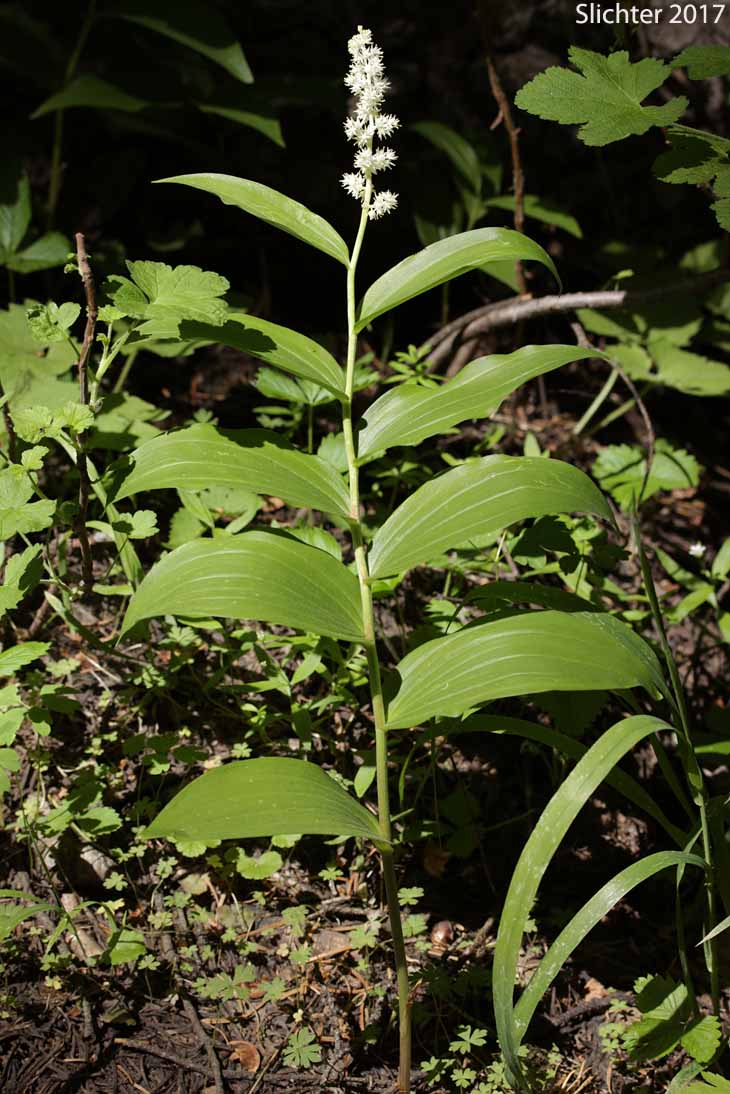 -
- 
False solomon seal as seen at left blooming on the north-facing slopes of Lookout Mountain, Ochoco National Forest.........June 25, 2017. The photo at right shows false solomon seal blooming along the Holland Falls National Recreation Trail #416, Flathead National Forest......May 27, 2023.
Characteristics:
False Solomon seal is an attractive perennial wildflower.
The stout flower stems arise 30-90 cm high from a network of rhizomes. The
herbage ranges from somewhat glabrous to finely haired. The 8-16 leaves
alternate along the stems and are ovate to ovate-oblong or ovate-elliptic
in shape with the blade narrowing gradually to a point. The base of each
blade is sessile or clasping and the leaves range from 7-20 cm long and
4-8 cm wide. The venation is parallel and the entire margins may be somewhat
wavy.
The inflorescence consists of numerous small white flowers
in a freely branched panicle from 3-12 cm long. The tepals are narrowly
oblong in shape and about 1.5 mm long. The stamens are about 2.5-3 mm long
and ovate-lanceolate in shape. The stamens are generally much wider than
the tepals. The fruit is a globose reddish berry from 5-7 mm in diameter.
False Solomon seal is a pretty wildflower suitable
for the woodland garden. Due to its height, it is probably best utilized in
the middle or back of flower beds or it can be planted next to the trunks
of trees or intermittently through the woodland.
Habitat:
False Solomon seal is a plant of most shady
woods, streambanks, and open forests from near sea level to medium elevations
in the mountains. East of the Cascades it may be found in open riparian areas
or moist streambanks and even occasionally on higher prairie ridgetops. In
such situations it is generally much reduced in size and may even be confused
with its smaller cousin,
star-flowered false Solomon seal.
Range:
False Solomon seal may be found from Alaska
to California and east to Nova Scotia and south to Georgia, Mississippi, Missouri,
Colorado and Arizona.
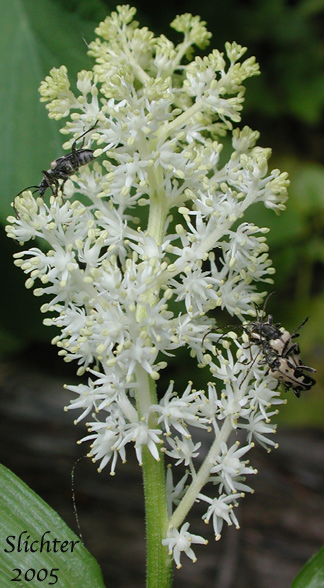
A close-up of the inflorescence of false solomon seal.
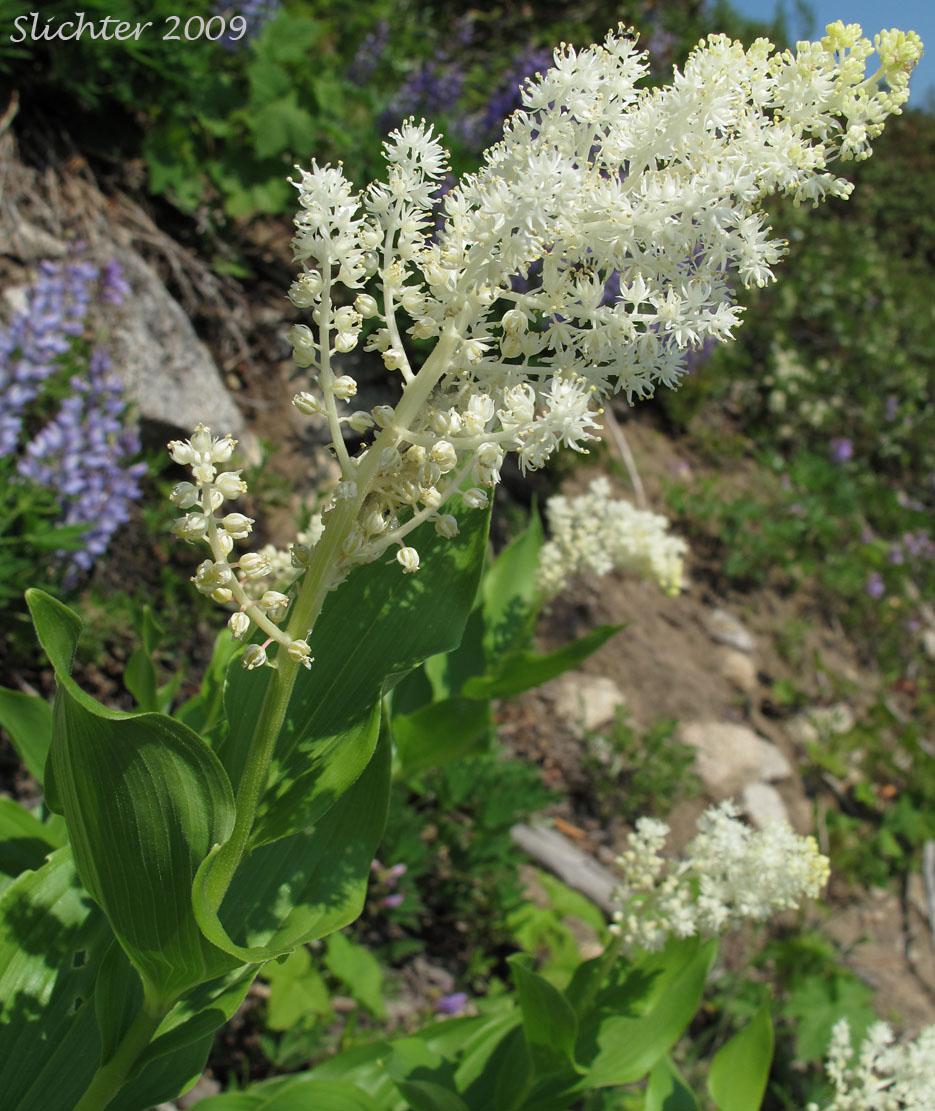 -
- 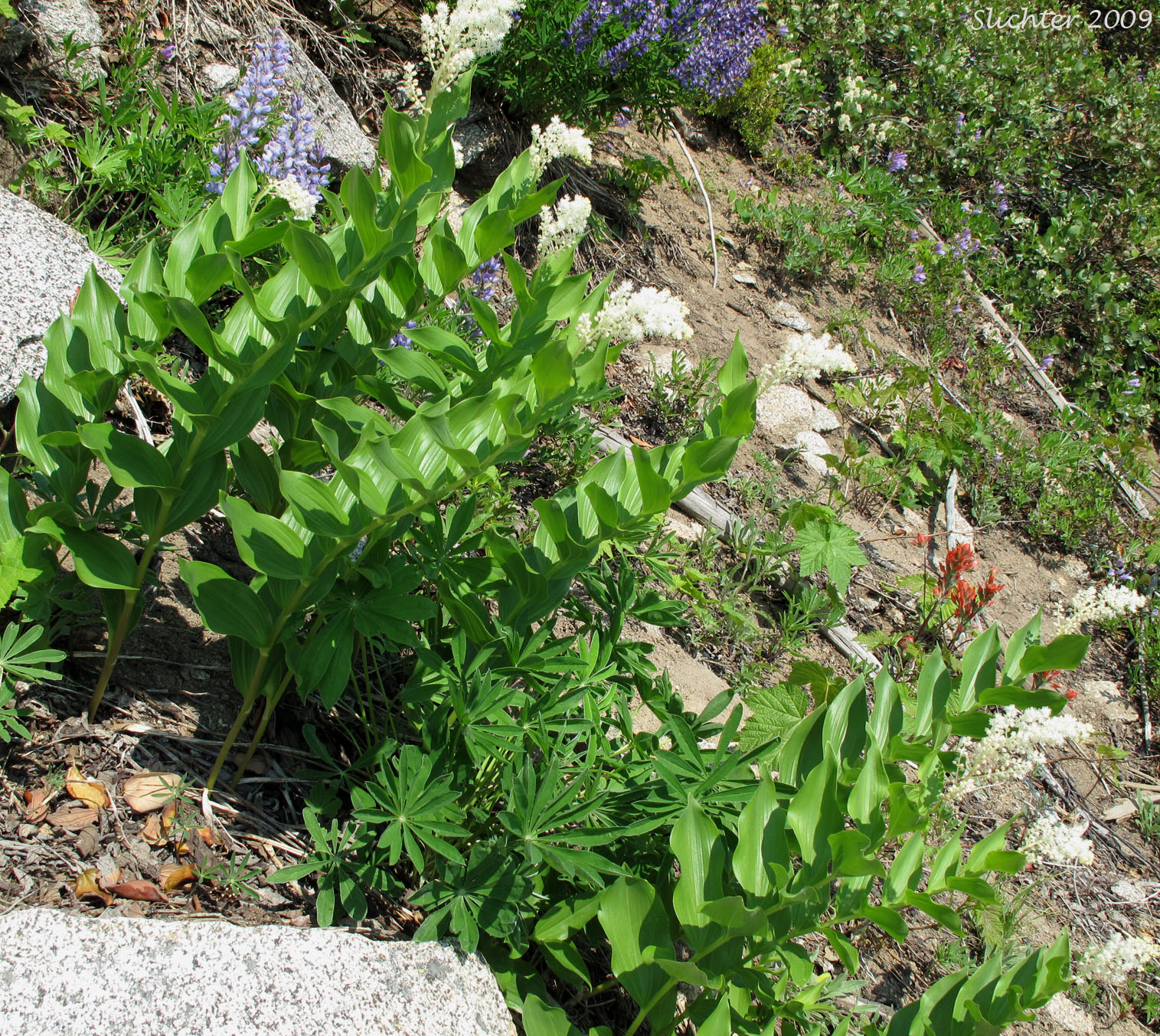
Two views of false solomon seal growing on the open, rocky slopes of Wedge Mountain, Wenatchee National Forest.........June 8, 2009.
False Solomon Seal: Maianthemum racemosum ssp. amplexicaule
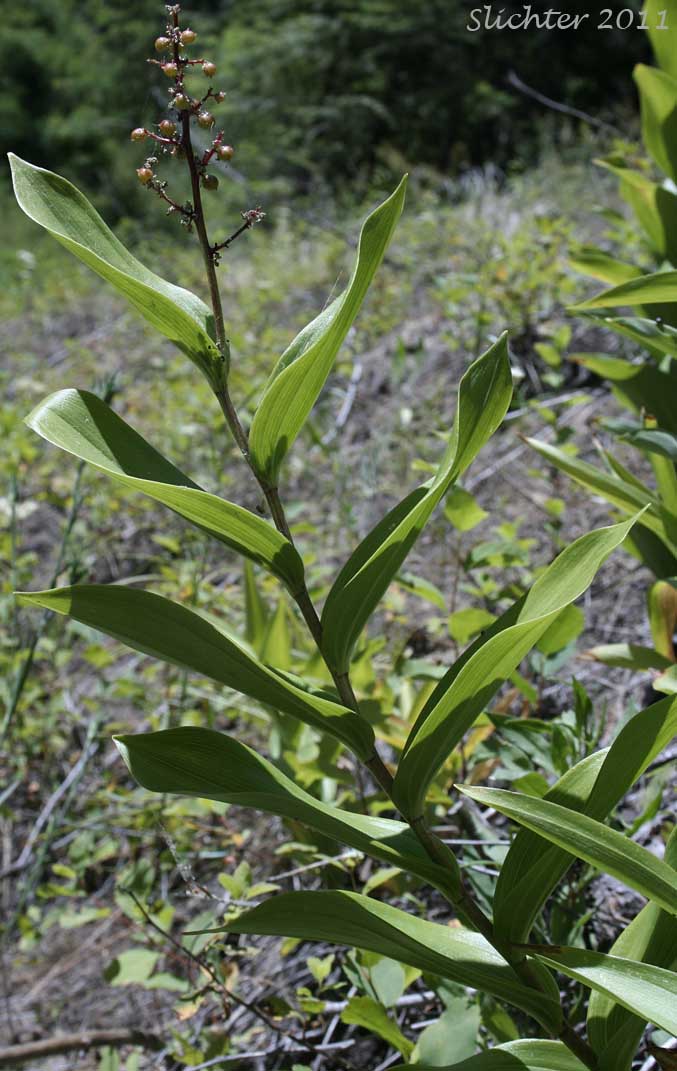
False solomon seal with maturing fruits at its tip as seen along the valley trail about one-half mile northwest of the Painted Rocks trailhead, Little Spokane River Natural Area..........July 5, 2011.
Paul Slichter